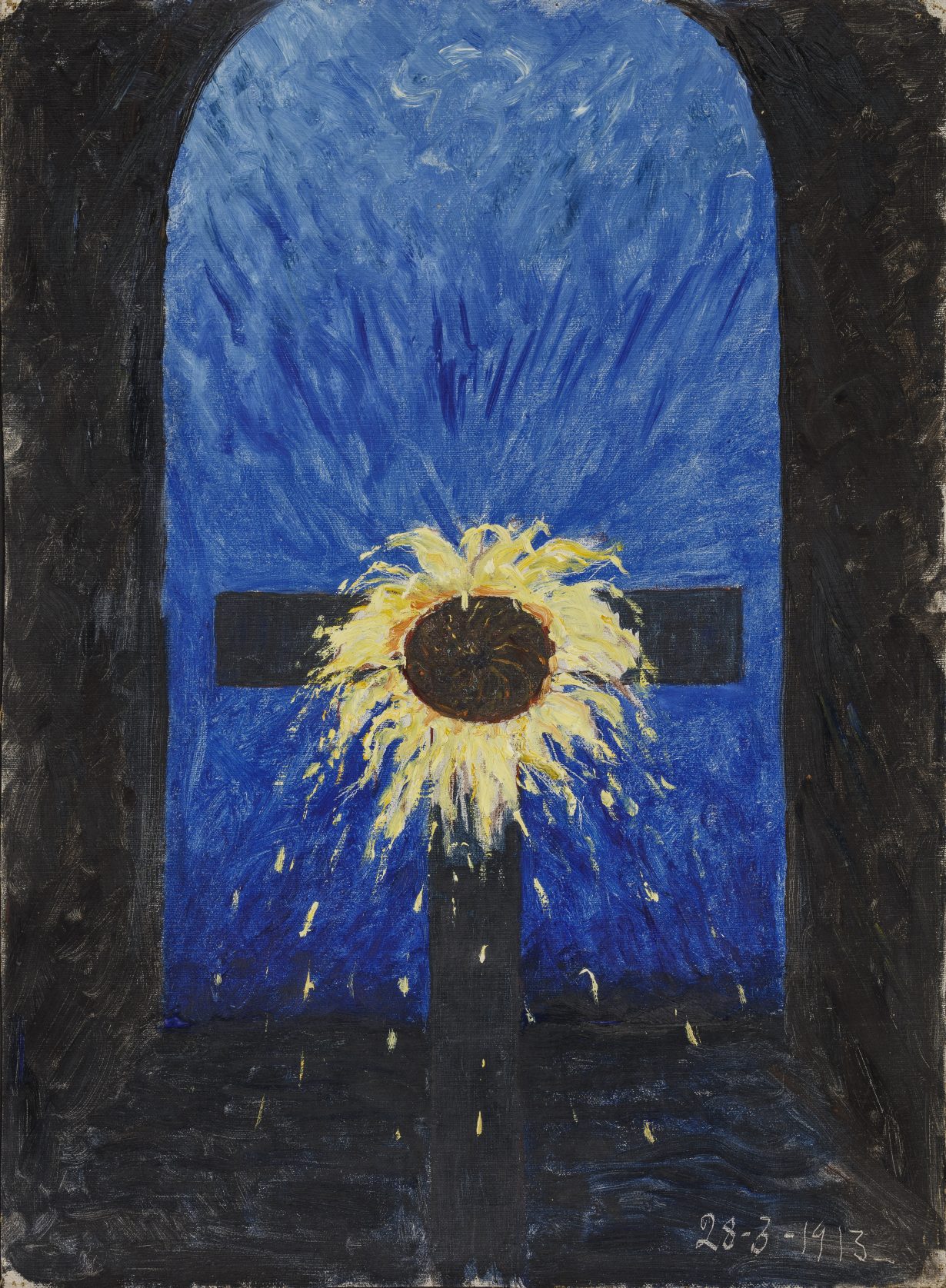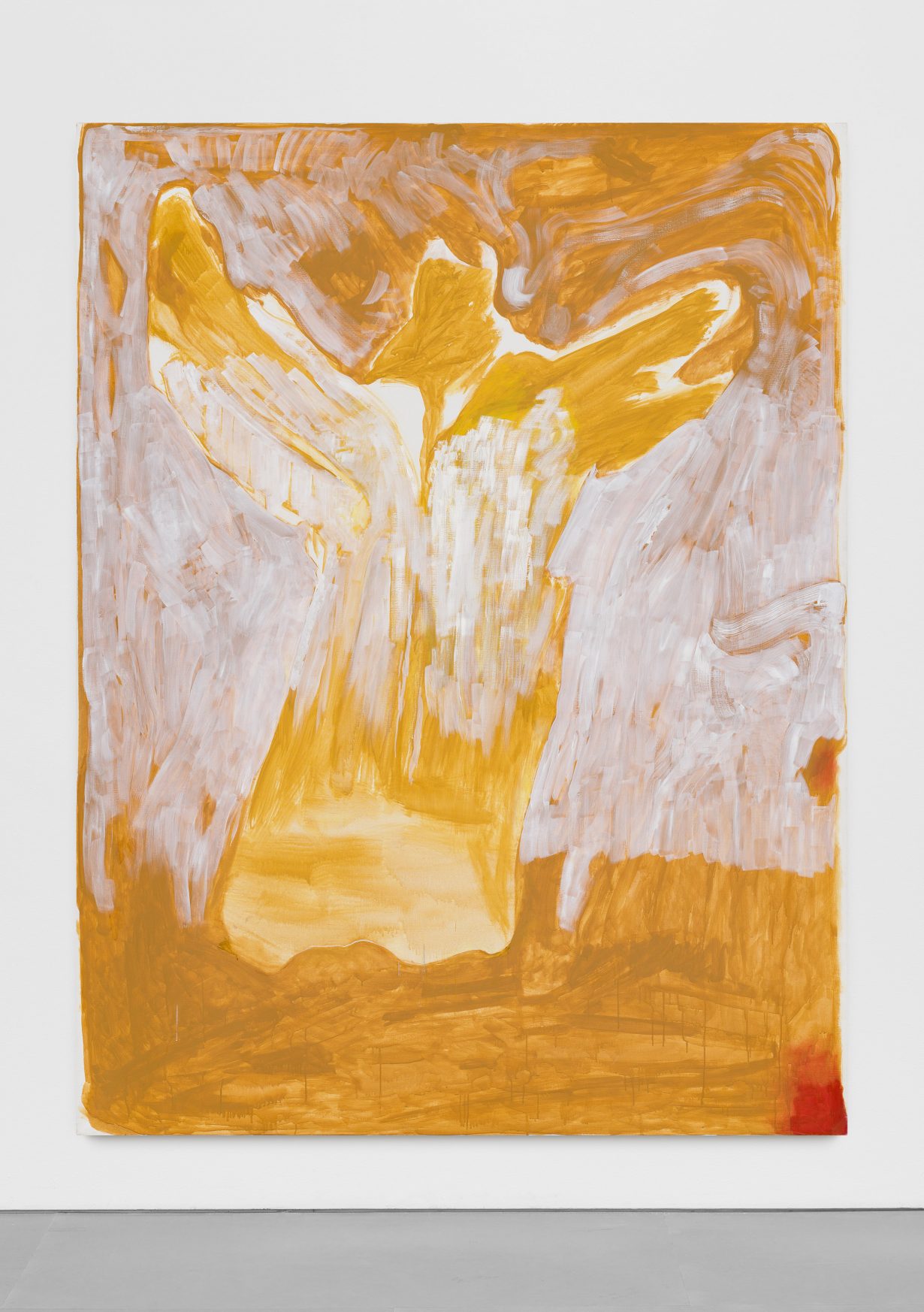A new show at Bozar, Brussels amalgamates the symptoms of twenty-first-century art’s ‘esoteric turn’, bringing together historical figures with living artists of Swedish origin or location
Twenty-first-century art has seen a proliferation of tendencies that can be collectively referred to as ‘the esoteric turn’. The manifestations of this proclivity show no signs of waning in the 2020s, discerned in the work of legions of contemporary artists, the recuperation of once-dismissed oeuvres, in academic research projects that reveal how occultism was a catalyst for the avant-garde and innumerable thematic institutional exhibitions. Swedish Ecstasy amalgamates all these symptoms, bringing historical figures together with living artists, all of whom originate from Sweden (or in the case of Carsten Höller, reside there). The exhibition’s opening gallery is devoted to a substantial extract from Hilma af Klint’s renowned 193-piece opus Paintings for the Temple (1906–15); this is the first time af Klint has been exhibited in Belgium, but it’s just one of several major European institutional exhibits featuring her work this year. The extent to which af Klint’s legacy has (rightfully) been validated and revived over the past two decades is remarkable, and a similar process of restitution is now taking place in response to the work of Anna Cassel, who collaborated with af Klint both in the studio and in séances as part of a small Christian Spiritualist group known as The Five. Here Cassel is represented by a suite of diagrammatic paintings – all produced over consecutive days in April 1913 – that are built upon Anthroposophical and Rosicrucian symbolism.

Laudably, Swedish Ecstasy evinces how it was not unusual for turn-of-the-century artists to be drawn to movements such as Spiritualism and Theosophy, and the paintings of August Strindberg demonstrate that not only non-figurative art emerged from these convergences. Known outside Sweden as a playwright, Strindberg was a polymath: his impressionistic landscapes here are displayed alongside 12 ‘celestographs’ created during the mid-1890s by exposing photographic plates to the night sky. (What he claimed were negatives of the starry firmament are in fact the catalytic blossoms of a chemical reaction, though no less beautiful for that.) Strindberg’s idiosyncratic renderings of earth, sea and sky are informed by his devotion to the Swedenborgian doctrine of correspondences, the postulation that everything in the physical universe has a heavenly counterpart. Indeed Emanuel Swedenborg himself, present here via a vitrined selection of early-eighteenth-century manuscripts, is a vital progenitor whose theological postulations lie in the DNA of all this later era’s hermeticism.

That the contemporary artworks in this show possess none the numinosity of the historical pieces is inevitable, the latter now appearing more akin to religious artefacts, byproducts of zealous fervour. Nevertheless these recent artworks, while disparate, underscore how esoteric traditions – and the twentieth-century artists influenced by them – remain a potent source of creative stimulus. Lars Olof Loeld’s minimal, geometric Sub Rosa paintings (2007–16) evoke the Neoplasticist tabulations of Piet Mondrian (himself a card-carrying Theosophist); four pieces from Christine Ödlund’s Psychedelic Botanist Series (all 2022) draw liberally from imagery found in Theosophical literature, especially Occult Chemistry, published in 1908. Three canvases from Cecilia Edefalk’s White Within series (1997–2008) possess a visionary quality, each featuring ethereal winged entities that call to mind Swedenborg and his conversations with angels.
The curatorial strategy of presenting cabalistic culture from the past alongside contemporary art informed by similar traditions, or at least produced with similar motives, is a generative formula with noteworthy historical precedents – The Spiritual in Art: Abstract Painting 1890–1985 (Los Angeles County Museum of Art, 1986) being one. These forerunners demonstrate that far from being a superficial trend, the esoteric turn is in fact a cyclical occurrence, albeit one now intensifying. The quickening of this phenomenon has its roots in both material and existential shifts that are specific to the present. The co-opting and elevation of arcane marginalia, and the attendant increase in financial and intellectual value, is a demand of both the market and of cultural industries, which must always find new frontiers. This turn also betrays a ramping-up of latent societal longing for antidotes to anomie, nihilism and spiritual starvation. Amid all this, perhaps, if we keep looking – as a continuum-demonstrating show like Swedish Ecstasy suggests – we might eventually find some solutions as to how to achieve transcendence while also reconciling ourselves to the diktats of so-called reason that govern our technocratic world.
Swedish Ecstasy at Bozar, Brussels, through 21 May
